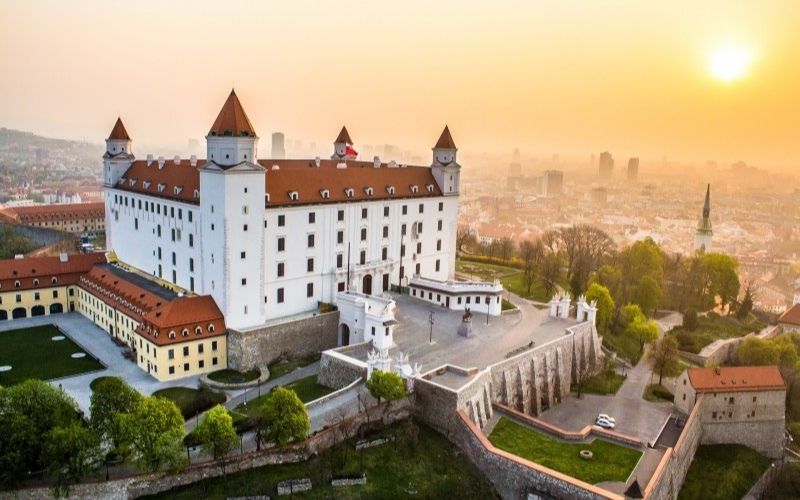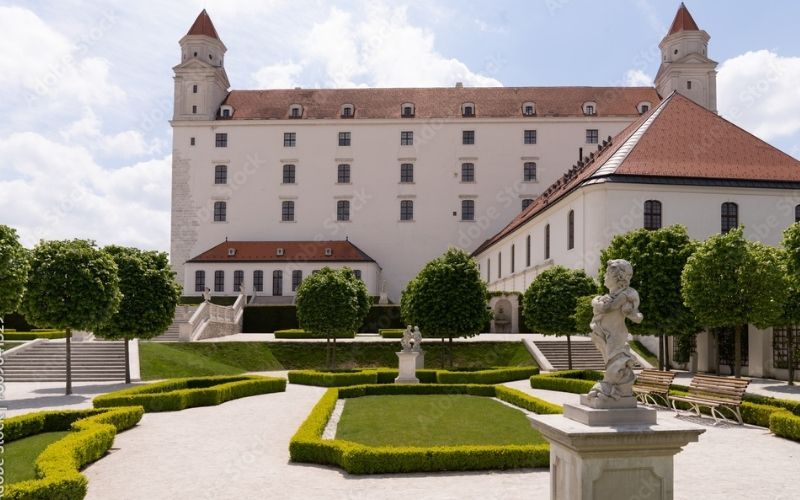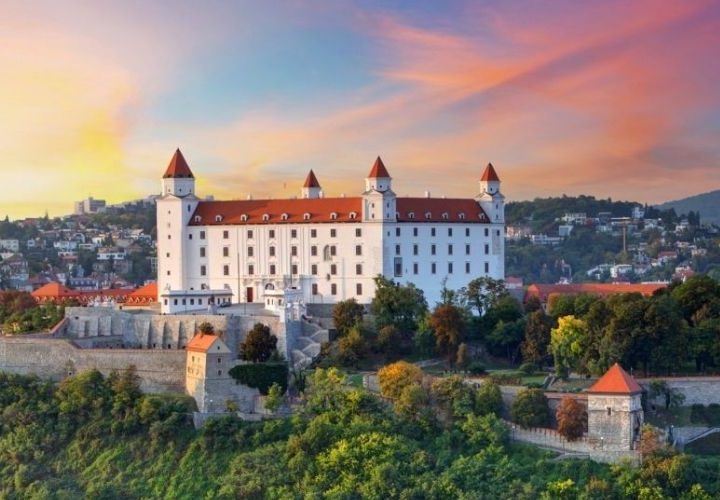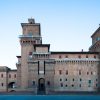Bratislava Castle
Bratislava Castle stands as one of Slovakia’s most iconic landmarks, offering breathtaking views of the Danube River and the surrounding city. With its striking rectangular structure and four corner towers, the castle dominates the skyline of Bratislava. Over the centuries, it has played a crucial role in the region’s political, cultural, and historical development. Initially built as a defensive fortress, it has been transformed multiple times, serving various functions throughout history. Today, it stands as a symbol of national pride, attracting thousands of visitors each year.
Location of Bratislava Castle
Situated on a hill overlooking the capital city of Slovakia, Bratislava Castle enjoys a strategic position near the banks of the Danube River. Its location has historically provided a significant defensive advantage, allowing for surveillance over important trade routes. The castle is found in the southwestern part of Slovakia, close to the Austrian and Hungarian borders, making it a key site in Central European history. Due to its elevation of approximately 85 meters above the Danube, panoramic views of the city, the river, and even parts of Austria and Hungary can be enjoyed from the castle grounds. Accessibility is convenient, as it is located within walking distance from the historic center of Bratislava.

History of Bratislava Castle
The origins of Bratislava Castle can be traced back to the 9th century, when a fortified settlement existed on the site. During the Great Moravian Empire, it served as an important stronghold. By the 10th century, control over the area had shifted to the Kingdom of Hungary, leading to further development of the castle’s fortifications. The first stone structure was erected in the 11th and 12th centuries, replacing earlier wooden constructions.
In the 15th century, during the reign of Emperor Sigismund of Luxembourg, the castle underwent extensive reconstruction. Gothic elements were introduced, and its defensive capabilities were significantly enhanced. In the 16th century, under the rule of the Habsburgs, Renaissance-style modifications were made. During this time, the castle also became a residence for Hungarian kings and an important political center.
Further transformations occurred in the 17th and 18th centuries, when the castle was rebuilt in the Baroque style. Under Empress Maria Theresa, it was used as a royal residence, and its interior was richly decorated. However, in 1811, a devastating fire broke out, leaving the castle in ruins. For more than a century, the structure remained neglected, serving only as a historical relic.
Restoration efforts were undertaken in the mid-20th century. Between the 1950s and 1960s, extensive reconstruction was carried out, returning the castle to its former glory. Since then, it has been maintained as a national cultural monument, hosting exhibitions, events, and state functions.

Current status
Today, Bratislava Castle stands as a fully restored historical monument and a significant tourist attraction. Managed by the Slovak National Museum, the castle houses several permanent exhibitions showcasing Slovak history, medieval artifacts, and royal treasures. The castle’s architectural beauty has been preserved, and its interiors now reflect the grandeur of past centuries.
Visitors can explore various sections of the castle, including the Crown Tower, which offers spectacular views of the city and the surrounding region. The castle gardens, redesigned to match their historical appearance, provide a peaceful retreat for guests. A modern addition to the site is the Treasure Chamber, where valuable historical artifacts are displayed.
In addition to its role as a museum, the castle serves as a venue for cultural events, state ceremonies, and official receptions. Restoration and preservation efforts continue to ensure that its historical significance is maintained for future generations. As one of Slovakia’s most important landmarks, Bratislava Castle remains a testament to the city’s rich heritage and enduring legacy.
Admission
Community features
Castle features
Video
Location
Official website
Featured listings














